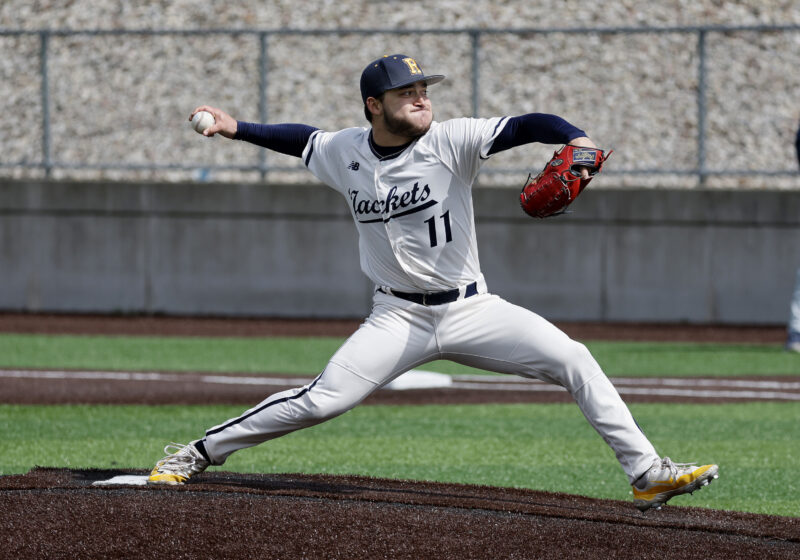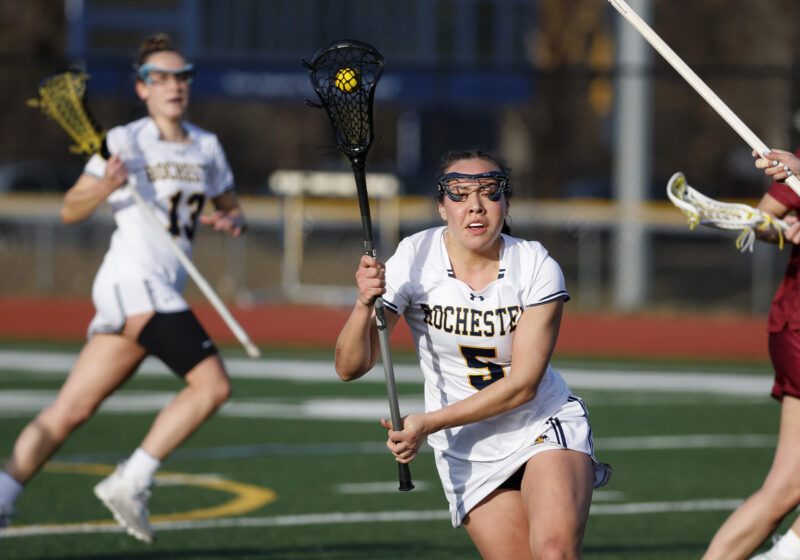‘Tis the season for sabermetrics, where crazed-sports fans like me mull over the history books of baseball’s finest players. More importantly, it is a time to scrutinize past performances and build your fantasy baseball team.
I think a little history to help set the scene is in order. Fantasy sports date back to the early 1980s, a time when “MacGyver” was a hit series and the mullet was a sexy look.
Rotisserie-style baseball entered as the preferred sport of fantasy players, primarily because it was a game based solely on statistics. This was also a time when ESPN and the Internet were just ideas.
Fans resorted to using the box scores from the sports section of their daily newspaper to keep track of their team. Categories like home runs, RBIs, batting average, on base percentage, ERA and slugging percentage served as the scoring device for the game.
Over time, outlets like ESPN, Yahoo! and other online based Web sites seized the popularity of the game and began sponsoring leagues. They gave their participants access to statistics and linked them to sports articles featuring their players.
As the technology advanced, the leagues expanded in size and became faster in obtaining information. Today, a fantasy player can access a player’s progress live during an actual game and see how that player’s performance of the day affects his overall team.
Fantasy sports eventually grew to encompass other professional sports such as golf, basketball, soccer, football and even NASCAR.
While these professional sports remain popular today, baseball still stands as my favorite pastime, especially in the world of fantasy sports.
I’ve learned a lot from playing fantasy baseball. Over the years, I’ve built a strong foundation for the fundamentals of managing and building a fantasy team.
During my five years of participating in various online leagues, I’ve learned the values of home run hitters and the importance of choosing a good closer. In the time spent assembling teams and managing them, I’ve accepted two important rules.
One – offense is vastly superior to the pitching staff. Two – a good starter is worth at least twice the value of the best closer in the league, whether it’s Eric Gagne or Mariano Rivera.
When you understand and accept these rules, you’re ready to take on sports analysts like Peter Gammons. The first step to playing in your fantasy league is drafting a team.
As general manager, owner and manager of your team, you have a lot of responsibilities – the first is scouting out players who would give your team great value.
While perusing statistics from Web sites and reading articles written by baseball analysts, you want to look for a few important characteristics. One is the player’s history. Look at how well the player has performed in the past and see if there is consistency.
The best place to begin when actually selecting a player is considering rule number one – selecting an offensive machine, one who can crank out home runs and RBIs and still maintain a superior batting average.
The top five players who fit this category are Alex Rodriguez, Albert Pujols, Manny Ramirez, Vladimir Guerrero and Miguel Tejada.
Nab one of these guys in the first round because by the time the second round comes up, they’ll be wearing your opponent’s uniform.
Once you’ve picked yourself a superstar position player, it’s time to think about filling up spots in your lineup, particular positions that don’t consist of talented players.
One position is second base. Usually a second baseman is built for speed and not so much home run power. Selecting a second baseman who cranks out more than just speed and batting average is certainly a rare opportunity.
Only a few stars such as Jeff Kent, Brett Boone and Alfonso Soriano really equal the caliber of other strong hitters. Once they’re gone, you should start seeking out players who can steal bases and also sport a high average, the two primary functions of a second baseman.
The other two infield positions, third base and shortstop, also have talent pools that are very shallow. A shortstop, similar to a second baseman, is more agile than bulky and therefore serves as another weapon of speed in your lineup.
Players like Rafael Furcal and Derek Jeter steal when pitchers aren’t looking and hit with tremendous consistency.
At third base, the talent is a little more concentrated with all-around players like Chipper Jones, Scott Rolen and recent starts like Aramis Ramirez and Hank Blalock.
I apologize to all Mariners fans for neglecting Adrian Beltre. While he had a record career year, his history indicates contrary value.
During his first six years in the big leagues, he has never hit over 23 home runs, has batted in less than 85 runs a season and has never achieved an average above the .300 mark. Last year – his seventh – was the only time he ever did well.
Wait to pick him up until at least the seventh round of the draft. If he’s still around and there’s hardly any other big name players left to fill in at third base, draft him.
Picking someone behind the plate can be a relatively simple job, if you’re selecting during the 5th or 6th round of the draft. I’m partial to selecting young players like Joe Maur.
I’m really upset that he was sidelined most of the season by injury. He had received so much press for his skill as a catcher, but also his potential as a great hitter.
If he’s still available in the 6th round and Barry Bonds isn’t around, then I would pick him up. Two other important names are Red Sox captain Jason Varitek and Ivan “Pudge” Rodriguez.
Outfielders are usually plentiful and very good at hitting the long ball. You can usually find a good one still up for grabs during the 11th and even 16th rounds of your draft pick. The first statistic you look for in an outfielder is his number of home runs.
Home runs translate into lots of points for other categories like average, slugging percentage and RBIs. Players like Gary Sheffield, Jim Edmonds, Ichiro Vernon Wells and Carlos Beltran have put up great numbers during their years in baseball and many of them are destined to continue producing big.
The last offensive position is first base, which is a position also reserved for the big brutes like David Ortiz, Todd Helton, Jim Thome and Richie Sexson, guys who make you sick just by watching them make contact with the ball.
If you’re looking for someone who can make things happen at first base, you might want to select early, like during the fifth round. Otherwise, you might be left with Mike Piazza.
Then establish your rotation and bullpen. In my five years, I’ve always stuck to one important rule – never select last year’s Cy Young Winner.
I remember taking Roy Halladay as a first round pick last year, but luckily traded him before the season began – whew.
You want someone who can anchor down your staff and consistently guarantee you a win or great stats every time he takes the mound.
There’s the famed Randy Johnson, whom I believe hall of famer Sandy Coufax is the biological father of. There is Red Sox hero Curt Schilling who thrived at Fenway last year. There was also last year’s Cy Young contender Jason Schmidt who plateaued slightly after the All-Star break.
If by the third round of drafting you haven’t invested in a pitcher, it’s time to pull one from the pile. Usually some good third round picks would be Mark Mulder and Tim Hudson. Two guys who will have always had great stuff, but could never make it last an entire season.
One individual I’m particularly interested in as a pitcher for my rotation is John Smoltz. He’s a guy who’s spent his last few years tucked away in the bullpen. During his time spent as Atlanta’s closer, he threw some nasty cutters and some wicked fastballs.
Smoltz’s graduation to the starting rotation is certainly exciting and will probably be very rewarding to all fantasy owners. However, the caveat to
Smoltz is the fact that he hasn’t pitched a long-inning game for a while.
Some other players to look out for during the middle of the draft are Jake Westbrook, Jake Peavy, Orlando Hernandez and, if he’s still around, Josh Beckett.
All three performed well last season. Westbrook, a ground ball pitcher, is a work horse like Schilling and Randy Johnson. He completed five games last year and was in the top 10 category for earned run average last season.
Beckett also has great potential, barring the return of blisters or any other unfortunate injury that would force him to miss games. He is a hard-throwing right-hander who has always been able to overpower hitters with his hot stuff.
Selection of a closer should be reserved for the middle to late rounds of the draft. Depending on the categories you select for your league, closers usually play a small role in getting points for your team. They get you saves and sometimes help lower your team’s ERA.
However, they don’t record many strikeouts, unless you’re holding onto Gagne. They hardly receive any wins for the outing because they’ve been brought into a game to pick up a save and not a win.
Basically, the closer provides your team with saves and a good ERA, but fails to provide support in other important strategies like wins and strikeouts.
If you’re into closers, then the top five for the 2005 season are Mariano Rivera, Gagne, Jason Isringhausen and Keith Foulke.
Other closers to keep a close eye on include Joe Nathan, Armando Benitez and Bridge Lidge. Brad Lidge is a work horse at the “game over” position.
His two-inning performances during the postseason, especially games five and six against the St. Louis Cardinals ,proved his ability to go the distance by pitching out of jams.
Guys who have also shown great command in the closer role include Troy Percival, Trevor Hoffman, Billy Wagner and Eddie Guardado.
Guardado, although sidelined last year by an injury, proved his worth as the former Minnesota Twins closer. With a revamped team, the Mariners are going to be looking to him to close out more games this season.
When you start approaching the late rounds of the draft, you’ll start coming across players you’d never even heard of. Occasionally, a few good players still remain, hidden among the other nobodies.
The best bet is thinking of players who had an unusually poor 2004 performance like Derek Lowe, Ken Griffey Jr., Javier Vazquez and Mark Prior. These forgotten names could once again grace the cover of Sports Illustrated.
Serafini can be reached at jserafini@campustimes.org.

